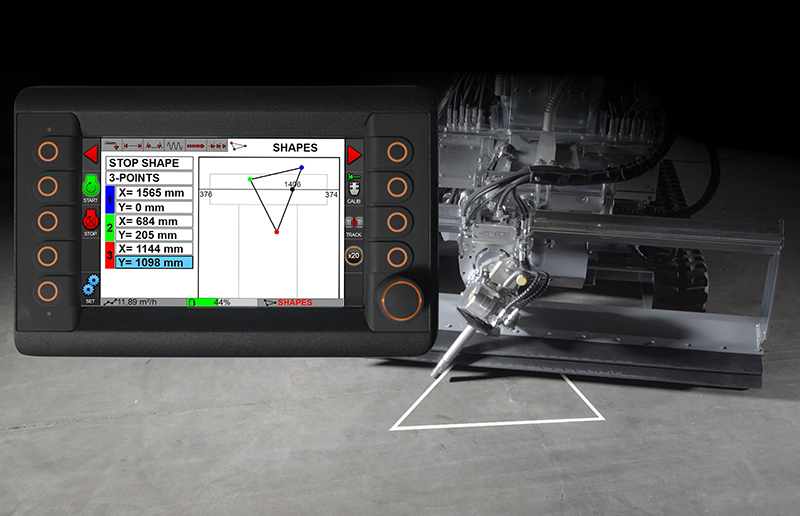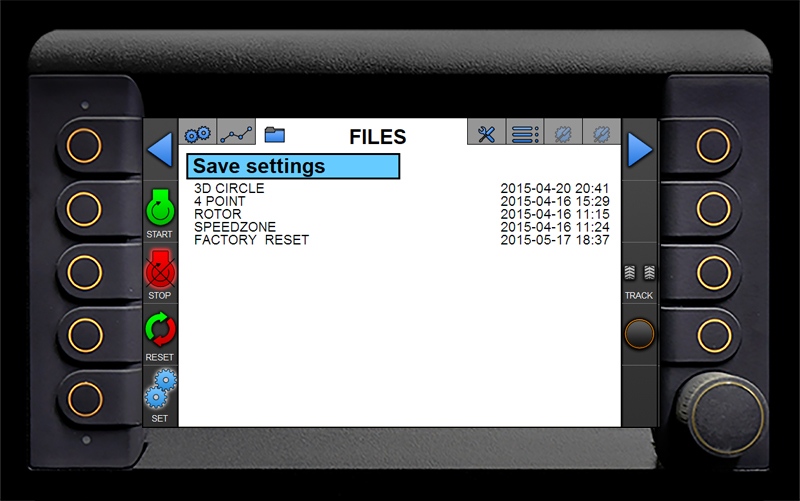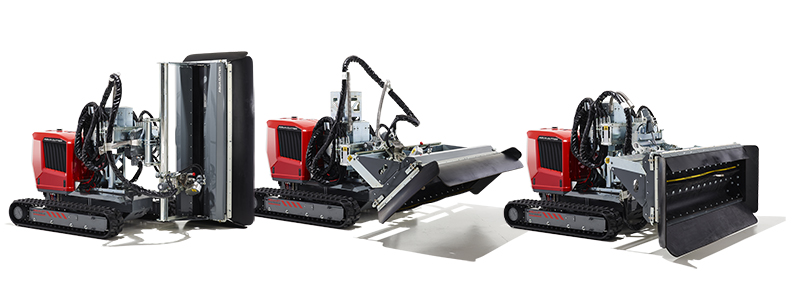
When you invest in Hydrodemolition equipment, you’re investing in powerful tools that allow you to perform work in a way that other machines can’t match. That also means old processes previously done with methods like hand work can be replaced. But first, it’s important to know the potential of the equipment to understand how to modify processes and truly maximize the benefits. To get you thinking, we’ve compiled five Aqua Cutter (with Evolution 2.0 or 3.0 control systems) capabilities that will save you substantial time and hassle.
Speed zones allow the operator to use multiple speeds, lance angles and oscillation speeds to achieve different depths in a single pass. If you’re working on a concrete slab, for example, and the concrete needs to be demolished 4 inches deep for the first 3 feet of the pass, but only requires demolition 2 inches deep in the next 3 feet of the pass, the Aqua Cutter can utilize its speed zones to cut at different depths from section to section without having to pass over the work a second time.
On a bridge deck, milling machines can be used to remove a shallow layer above the rebar before using the Aqua Cutter. This method might leave a ridge of concrete between the area the milling machine could reach and the abutment. In this instance, the operator programs a faster speed over the area that needs less removal and a slower speed over the ridge, allowing the correct depth to be achieved within the same pass. By implementing speed zones to control the depth, contractors save hours of work from the alternate process of removing ridges manually.

Not every job is a straight line. Often concrete removal projects result in awkward spaces and difficult shapes and angles. Aquajet’s Aqua Cutters feature an advanced Evolution Control System allowing for patterns other than a traditional rectangular path. The system allows machine operators to set geometrical shapes, such as circles triangles, squares and rhomboids. The shape can be set on the Aqua Cutter or drawn on the concrete surface, enabling the robot’s teach-in system to follow the outline and precisely cut the shape.
For example, if flatwork is being done on a bridge that has a joint at a 45-degree angle, that joint would leave a triangle shape that needs to be removed manually with a jackhammer. Instead of expending the labor to take out the remaining concrete by hand, an Aqua Cutter can be set to cut in the shape of a triangle, saving both time and money.

You can make use of the Aqua Cutter’s efficiency for more than straightforward flatwork. Through the Aqua Cutter’s indexing technology, the tracks can be adjusted to work along a curve, creating a turn radius to follow the path of the surface that needs to be removed.
Whether it’s a parking ramp or a tank, an Aqua Cutter can conquer curves with a simple adjustment to the tracks through the indexing feature. This causes the robot to turn when necessary. If you are working and there’s a curved wall to your left, for example, the inside track’s turn radius can be set to be shorter (30 millimeters, for instance) and the outside track’s to be longer (100 millimeters) to allow the Aqua Cutter to travel on the curve.

Aquajet’s Aqua Cutters offer features to ensure the efficient transition from one project to the next.
After an operator fine tunes settings for a job, they can easily name and save the file, which also includes the date and time, for future reference. This is especially helpful when a contractor is working on a project with multiple phases and will leave and return multiple times. There is no need to create written documentation of settings or to start over for each phase. The operator can simply upload the desired files with the push of a button and resume work, which results in considerable time and cost savings.

Another Aqua Cutter efficiency factor is the flexibility stemming from the tilt function on the 410V, 710V and 750V models, which also feature a 3D head positioning system. Typically, a Hydrodemolition robot is positioned parallel to the wall being worked on. Aquajet’s robots, however, offer a hood that can rotate and flip. This unique flexibility allows an Aqua Cutter to work facing a wall and reach the surface where two walls join, rather than being limited to working parallel and having to remove the concrete by hand where machines can’t reach. This also gives you the option to work up to 20 meters (65.6 feet) on a wall with the tower supported at the top.
Consider a scenario where the wall being worked on meets a perpendicular wall, throwing a 90-degree angle into the mix. With an Aqua Cutter’s tilt function, the operator can position the robot to face the wall to remove concrete on the vertical joint. Without a tilting hood, a Hydrodemolition robot wouldn’t be able to reach this angle created by adjoining walls.

Hydrodemolition continues to grow in popularity as an efficient method to remove large amounts of concrete and to extend the life of concrete repairs. Aquajet’s Aqua Cutters provide industry-leading technology that allows contractors to be more productive and effective than ever. By gaining familiarity with everything the equipment offers, contractors can maximize their investment and profitability.
Contact us about advanced training options if your team could benefit from additional education.